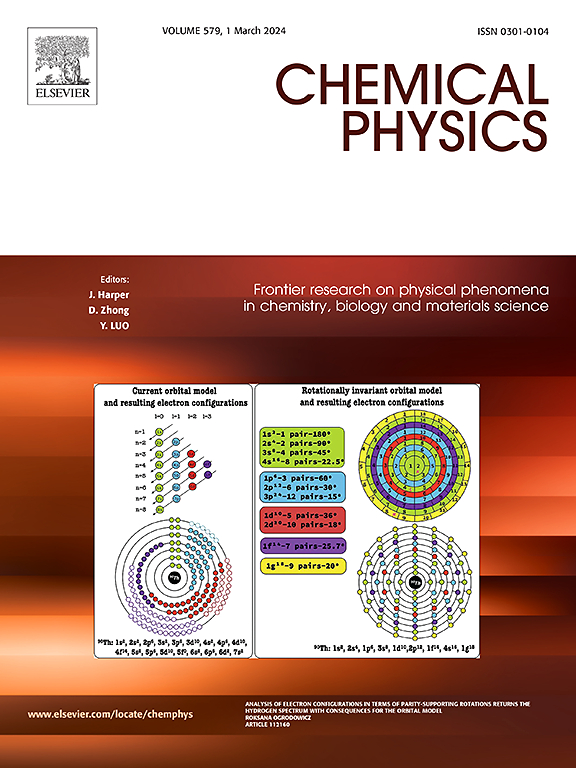通过从头算研究了解四边形XH2 (X = Y, Zr)氢化物优于立方氢化物的稳定性和增强的物理性能
IF 2.4
3区 化学
Q4 CHEMISTRY, PHYSICAL
引用次数: 0
摘要
YH2和ZrH2等金属氢化物具有高中子中化效率、优异的热稳定性、耐腐蚀性、高氢密度和耐辐射性等独特的综合性能,是一种高度通用的材料,在先进技术中有着广泛的应用。在这项研究中,我们采用第一性原理DFT计算来全面研究四边形XH2 (X = Y, Zr)的结构、声子动力学、力学、弹性、电子、热力学和光电性质。虽然发现XH2的立方相(X = Y, Zr)是机械不稳定的,但它们的四方相被证实是结构,机械,热力学和振动稳定的。计算得到的晶格参数与已发表的计算和实验数据非常吻合。这两种化合物都表现出金属性质,带隙为0 eV,净磁化强度为零。弹性各向异性的XH2氢化物表现出ZrH2 >的硬度趋势;YH2。ZrH2的熔融温度为1328 K,而YH2的熔融温度为1123 K。热力学分析表明,与YH2相比,ZrH2具有更高的德拜温度、更低的T*熵和更稳定的自由能。ZrH2还具有更高的体积储氢能力,而YH2具有略高的重量氢含量。YH2 (90.80 kg/m3)和ZrH2 (121.26 kg/m3)的估计储氢容量不仅达到而且大大超过了美国能源部(DOE)设定的2025年基准,即40 kg H2/m3。光吸收,反射率和电导率数据表明,四方XH2 (X = Y, Zr)化合物适合于紫外光电应用,如紫外探测器和辐射屏蔽。我们的研究结果表明,四方XH2是立方相的更好替代品,为其整合到未来的核反应堆、储氢系统和能源技术中铺平了道路。这项研究提供了对其内在特性的基本理解,有助于可持续能源材料的发展和提高极端操作条件下的性能。本文章由计算机程序翻译,如有差异,请以英文原文为准。

Understanding the superior stability and enhanced physical performance of tetragonal XH2 (X = Y, Zr) hydrides over their cubic counterparts via ab-initio computational investigation
Metal hydrides such as YH2 and ZrH2 are highly versatile materials with a wide range of applications in advanced technologies due to their unique combination of properties, including high neutron moderation efficiency, excellent thermal stability, corrosion resistance, high hydrogen density, and radiation resistance. In this study, we employ first-principles DFT calculations to comprehensively investigate the structural, phonon dynamical, mechanical, elastic, electronic, thermodynamic, and optoelectronic properties of tetragonal XH2 (X = Y, Zr). While the cubic phases of XH2 (X = Y, Zr) are found to be mechanically unstable, their tetragonal counterparts are confirmed to be structurally, mechanically, thermodynamically, and vibrationally stable. The calculated lattice parameters show excellent agreement with available published computational and experimental data. Both compounds exhibit metallic behavior with a bandgap of 0 eV and zero net magnetization. The elastically anisotropic XH2 hydrides display a hardness trend of ZrH2 > YH2. Tetragonal ZrH2 has a higher melting temperature of 1328 K compared to YH2, which has a measured melting temperature of 1123 K. Thermodynamic analysis reveals that ZrH2 has a higher Debye temperature, lower T*entropy, and more stable free energy compared to YH2. ZrH2 also offers higher volumetric hydrogen storage capacity, while YH2 possesses a slightly higher gravimetric hydrogen content. The estimated volumetric hydrogen storage capacities for YH2 (90.80 kg/m3) and ZrH2 (121.26 kg/m3) not only fulfill but also substantially surpass the 2025 benchmark set by the U.S. Department of Energy (DOE), which is 40 kg H2/m3. Optical absorption, reflectivity, and conductivity data suggest that tetragonal XH2 (X = Y, Zr) compounds are suitable for ultraviolet optoelectronic applications such as UV detectors and radiation shielding. Our findings establish tetragonal XH2 as a superior alternative to the cubic phase, paving the way for its integration into future nuclear reactors, hydrogen storage systems, and energy technologies. This study provides a fundamental understanding of their intrinsic properties, contributing to the development of sustainable energy materials and enhancing performance under extreme operational conditions.
求助全文
通过发布文献求助,成功后即可免费获取论文全文。
去求助
来源期刊

Chemical Physics
化学-物理:原子、分子和化学物理
CiteScore
4.60
自引率
4.30%
发文量
278
审稿时长
39 days
期刊介绍:
Chemical Physics publishes experimental and theoretical papers on all aspects of chemical physics. In this journal, experiments are related to theory, and in turn theoretical papers are related to present or future experiments. Subjects covered include: spectroscopy and molecular structure, interacting systems, relaxation phenomena, biological systems, materials, fundamental problems in molecular reactivity, molecular quantum theory and statistical mechanics. Computational chemistry studies of routine character are not appropriate for this journal.
 求助内容:
求助内容: 应助结果提醒方式:
应助结果提醒方式:


